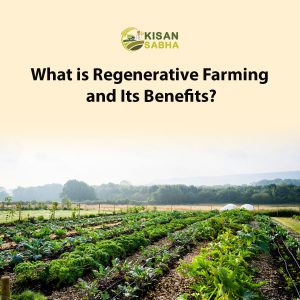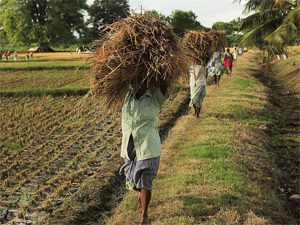‘Healthy eating, joyful eating’ is the newest catchphrase. People nowadays desire to eat nutritious foods that are sourced directly from nature. In other words, consumers are becoming more conscious of organic food, which is farmed without the use of synthetic fertilizers and chemicals. As a result, an increasing number of farmers are converting to organic farming.
What is Organic Manure?
Organic sources such as animal dung, vegetable compost, agricultural wastes, human excreta, and so on provide the nutrient-rich material that constitutes organic manure. They are essentially natural materials that degrade and mingle with the soil, boosting its fertility. However, the primary goal of giving organic manure is to convert complex inorganic nutrient supplements into simpler organic ones that plants easily absorb and digest.
Manures with a low nutritional content have a longer-lasting impact. It also increases the soil quality. The following are some of the primary sources of manure:
- Human waste, such as urine, night soil, sludge, sewage, slurry, and other organic municipal waste.
- Cattle waste such as urine, manure, and slurry from biogas facilities.
- Agricultural wastes such as agricultural residue, rubbish, stubble, twigs, dry leaves, and so on.
- Slaughterhouse wastes include blood meal, bone meal, flesh meal, fish waste, horn meal, and hoof meal.
- Water tank waste such as silt, weeds, water hyacinths, and so on.
- Agro-based industrial wastes such as bagasse, oil cakes, maize cobs, press mud, wheat straw, fruit and vegetable processing wastes, wheat bran, mushroom compost, and so on.
- Poultry wastes such as droppings, excess feed, and so on.
- Aside from that, you can utilize kitchen trash to create organic manure for gardening.
Different Types of Organic Manure:
- Vermicompost:- Earthworms produce this nutrient-rich compost by breaking down organic matter like kitchen scraps, yard waste, and animal manure. Also, vermicompost is known for its balanced nutrient content and ability to enhance soil structure. It’s an excellent choice for boosting soil fertility and promoting strong root development.
- Green Manure:- Green manure involves planting specific cover crops like legumes, clover, or rye during fallow periods. Farmers incorporate these crops into the soil, where they add organic matter and nutrients as they decompose.
Green manure not only enriches the soil but also prevents erosion and suppresses weed growth. - Farmyard Manure (FYM):- FYM is a traditional form of organic manure consisting of a mixture of animal dung, crop residues, and bedding material. Farmers age and decompose it before applying it to the fields.
However, FYM improves soil structure, and and water-holding capacity, and provides essential nutrients like nitrogen, phosphorus, and potassium. - Compost:- Composting involves the decomposition of a mixture of organic materials like kitchen scraps, leaves, and yard waste. Properly balanced compost provides a diverse range of nutrients and microorganisms that contribute to soil health. It’s an excellent choice for improving soil structure and increasing water retention.
- Fish Emulsion:- Fish emulsion, a liquid organic fertilizer, consists of decomposed fish remains. It’s rich in nitrogen, making it an ideal choice for boosting plant growth during the growing season. Plants easily absorb fish emulsion, which you can apply as a foliar spray or directly to the soil.
Also Read:- 7 Profitable Benefits of Investing in Indian Agricultural Land
Creating Organic Manure:
Step 1: Raw Material Collection: Gather suitable organic materials like kitchen waste, yard trimmings, crop residues, and animal manure. The key is to maintain a balance between carbon-rich (browns) and nitrogen-rich (greens) materials.
Step 2: Composting Process: There are various methods for composting, including aerobic composting, vermicomposting, and anaerobic composting. Choose the method that suits your resources and space availability.
Step 3: Turning and Aeration: Regularly turn the compost pile to ensure proper aeration and decomposition. This helps accelerate the breakdown of materials into nutrient-rich compost.
Step 4: Monitoring: Keep an eye on the composting process. The pile should heat up as decomposition occurs. If the pile becomes too hot, turn it more frequently to avoid overheating.
Conclusion:
Organic manure is a cornerstone of sustainable agriculture, offering a natural and effective way to enrich soil fertility and promote healthy plant growth. By understanding the different types of organic manure, creating compost through proper methods, and utilizing these nutrient-rich resources effectively, farmers and gardeners can contribute to a more ecologically balanced and productive agricultural system. By adopting these practices, we can cultivate healthier crops, protect the environment, and support the long-term sustainability of our food production systems.





